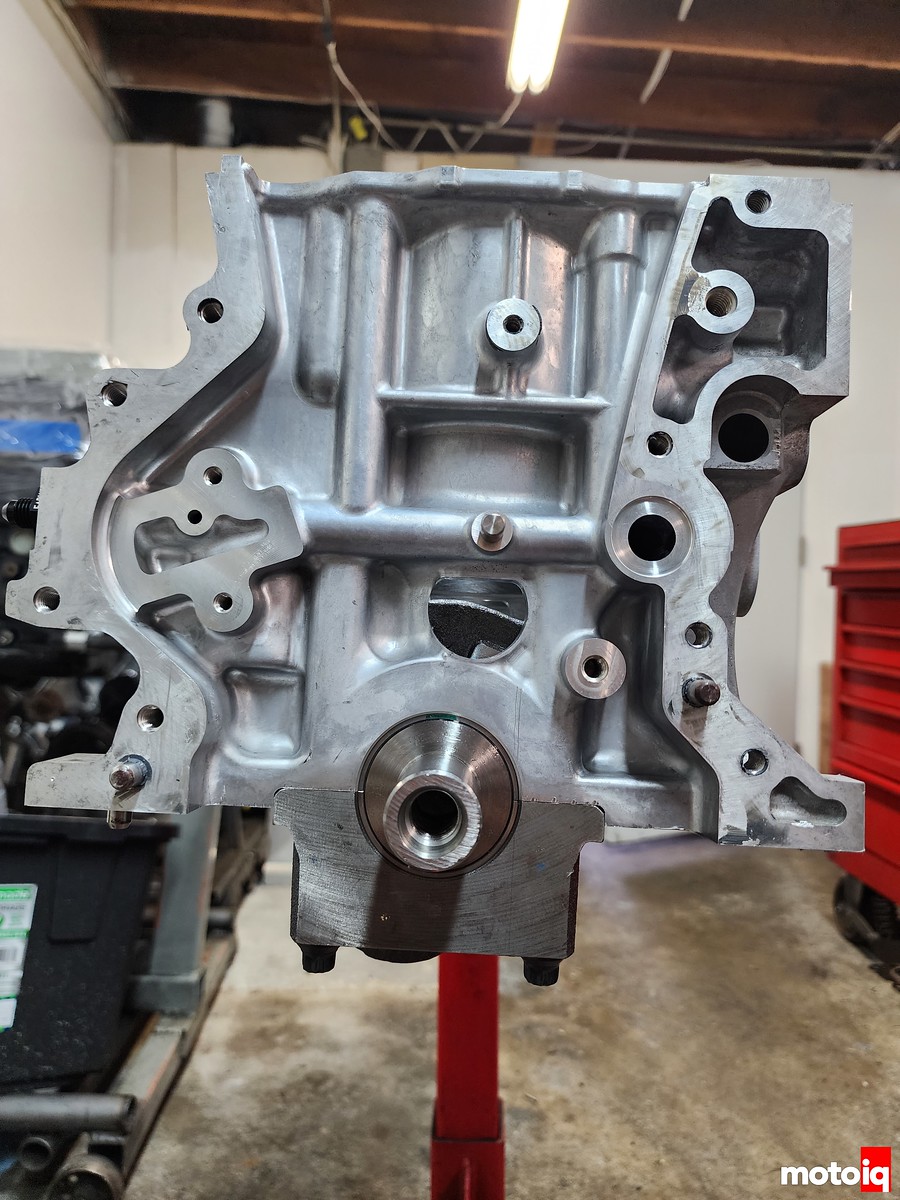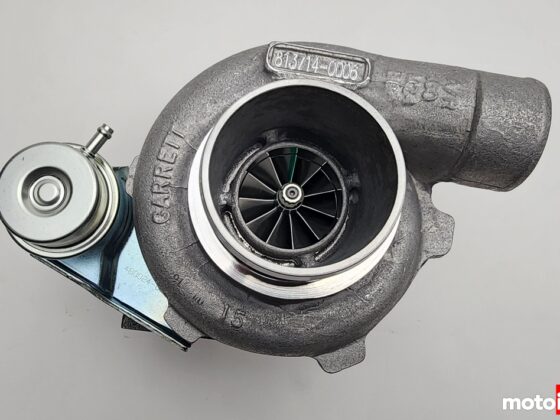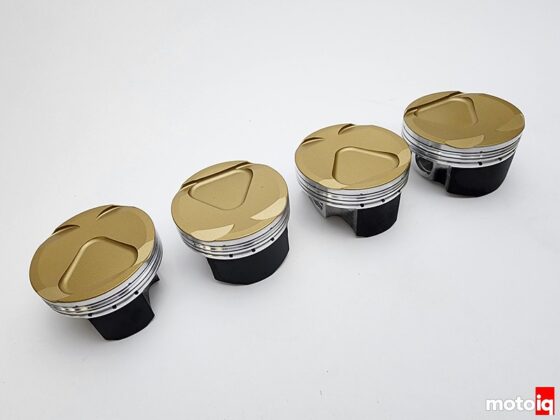
Being direct injection, the OEM piston dome has a pre-chamber for the direct cylinder injectors to aim at. it also has valve pockets and a slight dish. There are two generous quench pads at either end of the piston dome. The engine runs a very high 12.5:1 compression for both power and fuel efficiency made possible on pump gas by the in-cylinder cooling of direct injection. Cylinder cooling or not, we are going to have to lower the compression ratio to around 10:1 for turbocharged use with the new piston design.
Another unusual feature is that the engine is built for zero deck clearance with a very thin head gasket. Typically most engines set the piston 0.005-0.010 from the deck with a compressed head gasket thickness of around 0.030-to- 0.040″. This gives some room for resurfacing the head and block during repair and to have a little fudge factor for piston rock at TDC. This engine has zero deck clearance and a head gasket thickness of only 0.012″ Since we will run a forged piston with loose clearances and more rock, we are going to have to add some deck clearance into our new piston design! The OEM clearances are tight to minimize crevice volume for low emissions and to get the most in-cylinder turbulence for better combustion from the squish pads.

We are actually big fans of the OEM pistons, they are literally packed with state-of-the-art features. First, they are high-pressure die cast from a hypereutectic aluminum alloy. Hypereutectic alloy is an aluminum with over 11% of silicon. This means that the silicon comes out of a solid solution and creates an alloy with very low expansion and very good wear properties due to being full of hard silicon inclusions. It creates a long-lasting piston that can run very tight clearances which is good for noise and emissions reduction. Tighter clearances also means better ring seal. The only drawback of this alloy is that it tends to be brittle and doesn’t have the absolute strength of a forged alloy which is needed for turbocharging. We are going to make our pistons out of super tough and ductile low silicon 2618 alloy.
High-pressure die casting does a lot to improve the alloys mechanical properties over old-school gravity casting, but the OEM pistons are still not as strong as forged even though they are longer lasting. Good wear and high strength are not mutually exclusive when it comes to pistons.

The pistons have a hard anodized top ring groove for a long service life. The hard anodizing is only in the groove area as the anodizing tends to trap hydrocarbons and increase emissions! This is a very cool feature. The top ring is very close to the dome of the piston to minimize quench clearance to reduce hydrocarbon emissions as well. This is bad for turbocharging though as it makes the #1 ring land weaker and easier to break. For instance, this is why Subaru EJ engines tend to blow up so easily. We will have to move the ring package down lower for better strength. There is a pressure equalization groove between the #1 and #2 compression rings to improve compression ring sealing performance, just like a race piston!
The entire piston is cut down with short skirts for minimal reciprocating mass and less friction, just like a race piston. With the tight clearances allowed by the hypereutectic piston alloy, this will still run on a daily quietly. The piston pin is also offset to reduce thrust load, friction and noise. This is one cool OEM piston!




7 comments
I wouldnt´t worry too much about the unsupported main caps.
AMG M139 and BMW B58 have 2-bolt main caps without any girdles and they do just fine with one being the highest specific power 4-cyl ever made and the other being capable of 1000hp with bolt-ons.
Tiny main bolts ar a drawback though.
Interestingly the bore/stroke numbers (84/90.1) are also quite similar to the AMG 83/92 and BMW 82/94.6.
That goes with my understanding that a small cylinder bore with a long stroke almost always lends itself well to turbocharging. In part due to faster burn time.
Have you looked towards the MR16DDT oil pump assembly? No balance shafts and looks to be a straight swap to the MR20DD block. Also the MR16DDT comes with a girdle, which I’m sure with some machining would fit the MR20DD.
It’s not just the matter of two bolts, it’s the flimseyness of the caps and the register area of the caps. Due to the compressed time we didn’t investigate the Juke gridle but my thinking is it probably helps if it is adaptable. We just didnt have the time to have studs made and then machine and align bore the block.
Mike, you mentioned tight timeframe – is this a SEMA project? Doesn’t make any difference to me one way or the other, just curious.
stick around and find out!
Will do!
Very cool to see all this tech in a lowly Sentra. Subaru, why can’t you even do this on your “sport” engines?
I like how the piston pins are already showing slightly concerning wear patterns even at stock power level and not much mileage. I thought the connecting rods would be the real main underbuilt parts of the bottom end, but nope, turns out the whole bottom end is underbuilt. Oh, Nissan.